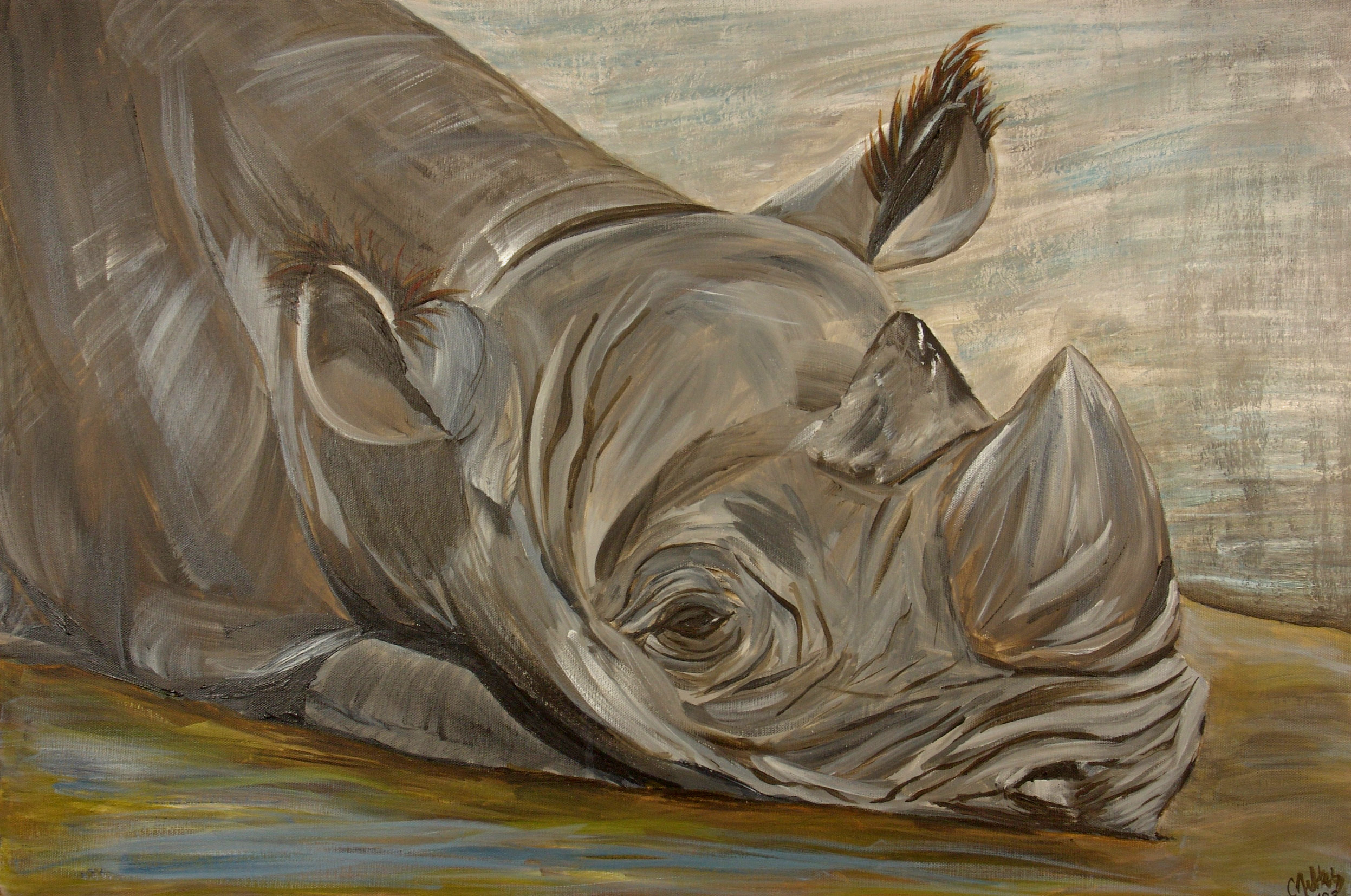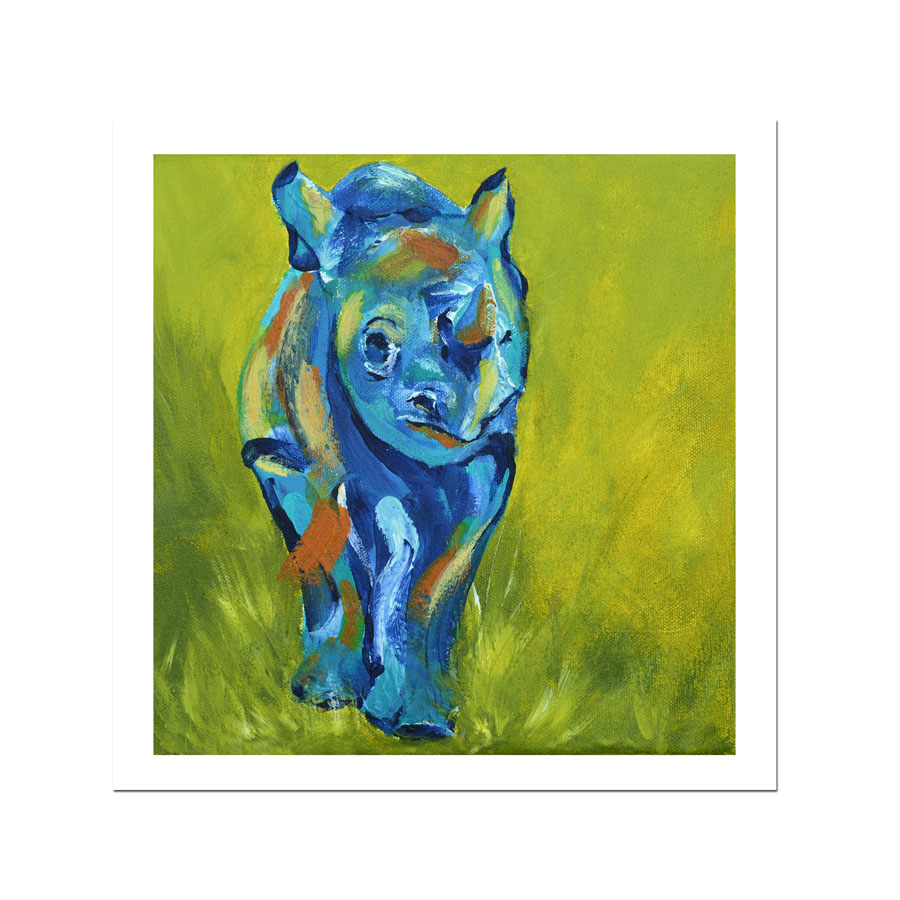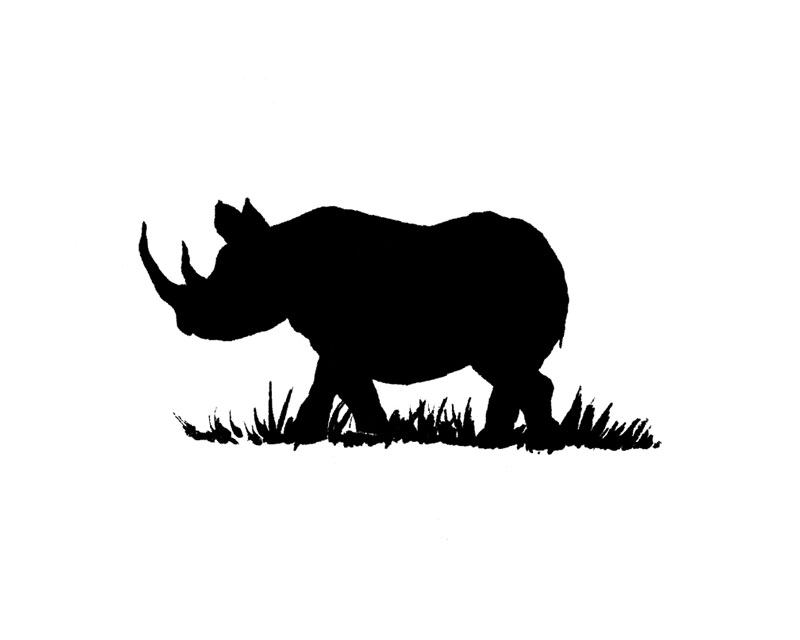 Toto, 20×30 Acrylic on Canvas
Toto, 20×30 Acrylic on CanvasRhinos are endearing. Despite their reputation for being fierce and aggressive, they can be amazingly gentle. I cannot look into those eyes and see those wonderfully wrinkly lips and simply not be enchanted.
September 22nd was World Rhino Day. Four of the five species of rhinoceros–black rhino, white rhino, greater one-horned rhino or Indian rhino, Sumatran rhino, & Javan rhino–are threatened and three are critically endangered due to habitat loss and poaching.
To most people, this is not news. Blame is easily placed on the poachers. (Did you hear about that slaughtered rhino? Disgusting. Evil poachers!) However, the epidemic of rhino poaching is not that simple. More often than not, poachers are simply trying to earn money to feed their starving families. Seems pretty abhorrent to us in the United States, right? Do you not think that there are those in our own country who are out of work or homeless, needing to feed themselves or their families that would not do the same if there was such an opportunity here, regardless of the risks? Don’t get me wrong–I am not sympathizing with the poachers. What I am saying is that while they are a part of the problem, they are not the source of it. What drives the market for rhino is the demand in China and Vietnam for rhino horn. Ground into a powder, it is believed to have medicinal purposes.
Rhino horn is made of keratin, the same as hair and fingernails.
Though there is no scientific evidence to support that rhino horn has any medicinal value whatsoever, unfortunately western medicine is not the basis for this cultural belief but rather centuries of eastern medicine practices and cultural tradition.
Many organizations and zoos around the world are working together to keep native rhino populations alive and thriving, through in situ and ex situ conservation programs as well as helping to maintain and establish conservation laws and international treaties. To read more about the plight of the rhino, visit The International Rhino Foundation at www.rhinos.org.

